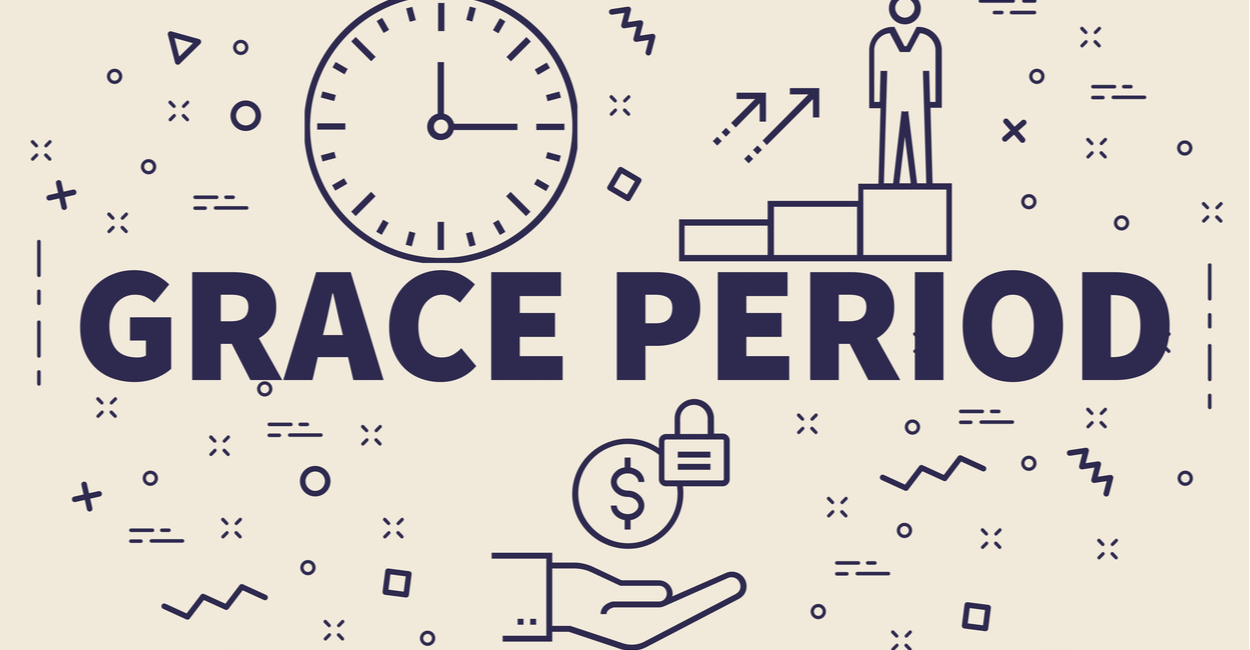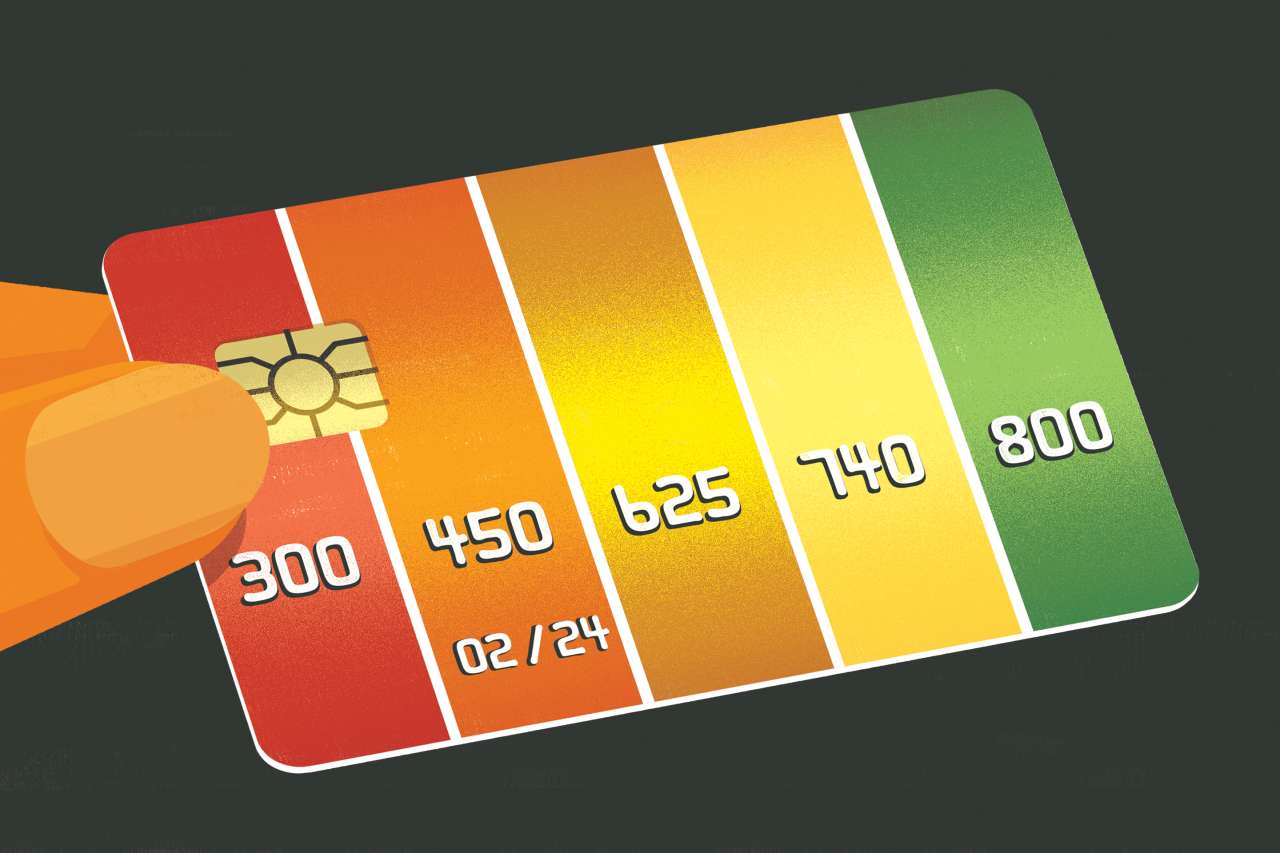

Finance
How Long Is A Credit Card Grace Period?
Published: February 19, 2024
Learn about the length of a credit card grace period and how it impacts your finances. Understand the importance of managing your payments effectively.
(Many of the links in this article redirect to a specific reviewed product. Your purchase of these products through affiliate links helps to generate commission for LiveWell, at no extra cost. Learn more)
Table of Contents
- Understanding the Basics of Credit Card Grace Periods
- Understanding the Concept and Function of a Credit Card Grace Period
- Exploring the Variability and Determinants of Credit Card Grace Period Duration
- Understanding the Variables that Influence Grace Period Duration
- Empowering Informed Financial Decision-Making
- Navigating Credit Card Grace Periods with Knowledge and Prudence
Introduction
Understanding the Basics of Credit Card Grace Periods
Credit cards have become an integral part of modern-day financial transactions, offering convenience and flexibility to users. However, amid the myriad of features and terms associated with credit cards, the concept of a grace period often remains elusive to many. Understanding the nuances of a credit card grace period is crucial for responsible financial management and can significantly impact one's financial well-being. In this article, we will delve into the intricacies of credit card grace periods, shedding light on their significance and the factors that influence their duration.
A credit card grace period refers to the duration during which cardholders can make purchases or carry a balance without incurring interest charges. Essentially, it serves as a window of time between the end of a billing cycle and the due date for the subsequent payment, providing cardholders with a buffer to settle their outstanding balances without accruing interest. This period acts as a financial reprieve, allowing users to manage their expenses and payments more effectively.
Understanding the nuances of a credit card grace period is crucial for responsible financial management and can significantly impact one's financial well-being. In this article, we will delve into the intricacies of credit card grace periods, shedding light on their significance and the factors that influence their duration.
A credit card grace period refers to the duration during which cardholders can make purchases or carry a balance without incurring interest charges. Essentially, it serves as a window of time between the end of a billing cycle and the due date for the subsequent payment, providing cardholders with a buffer to settle their outstanding balances without accruing interest. This period acts as a financial reprieve, allowing users to manage their expenses and payments more effectively.
The length of a credit card grace period can vary significantly among different card issuers and even among different credit card products offered by the same issuer. Understanding the factors that influence the duration of this grace period is essential for maximizing its benefits and avoiding potential pitfalls. Moreover, gaining insights into the importance of comprehending the credit card grace period can empower individuals to make informed decisions regarding their financial choices and expenditures.
In the subsequent sections, we will explore the specifics of credit card grace periods, elucidating the factors that can affect their duration and emphasizing the significance of comprehending this aspect of credit card usage. By unraveling these intricacies, readers will be equipped with the knowledge to navigate the realm of credit cards with confidence and prudence.
What is a Credit Card Grace Period?
Understanding the Concept and Function of a Credit Card Grace Period
A credit card grace period is a valuable feature that can potentially save cardholders from accruing interest on their purchases. Essentially, it is a specified period during which cardholders can pay their outstanding balance in full without incurring any interest charges. This timeframe typically starts at the end of a billing cycle and ends on the payment due date for that cycle.
During the grace period, any new purchases made on the credit card will not accumulate interest as long as the full balance is paid by the due date. This provision offers cardholders the opportunity to effectively utilize short-term financing without incurring additional costs, provided that they settle their balances within the stipulated grace period.
It’s important to note that not all credit card transactions are eligible for the grace period. Cash advances and certain types of balance transfers may not be included in this benefit and could start accruing interest immediately, irrespective of the grace period. Therefore, it’s essential for cardholders to familiarize themselves with the terms and conditions of their specific credit card agreement to determine which transactions qualify for the grace period.
One of the key benefits of a credit card grace period is that it allows cardholders to manage their cash flow more effectively. By strategically timing their purchases within the billing cycle, individuals can optimize the grace period to defer payments without incurring interest, thereby enhancing their financial flexibility. This can be particularly advantageous for individuals seeking to make significant purchases or manage unexpected expenses without immediately impacting their finances.
Furthermore, the grace period offers a degree of protection against interest charges in cases where cardholders may inadvertently carry a balance from one billing cycle to the next. By promptly settling the outstanding amount within the grace period, individuals can avoid the financial burden of accruing interest on their purchases, thereby promoting responsible credit card usage.
Understanding the concept and function of a credit card grace period is pivotal for maximizing its benefits and leveraging it as a tool for prudent financial management. In the subsequent sections, we will delve into the specific duration of credit card grace periods and the factors that can influence their length, providing readers with comprehensive insights into this fundamental aspect of credit card usage.
How Long is a Credit Card Grace Period?
Exploring the Variability and Determinants of Credit Card Grace Period Duration
The duration of a credit card grace period can vary significantly depending on the terms and conditions set forth by the card issuer. While the traditional length of a grace period has been around 25 days, it’s important to note that this is not a universal standard, and the actual timeframe can differ based on several factors.
Some credit card issuers may offer grace periods that extend beyond the conventional 25-day window, providing cardholders with additional time to settle their balances without incurring interest. On the other hand, certain cards may have shorter grace periods, requiring prompt payment to avoid interest charges. Understanding the specific length of the grace period associated with a credit card is crucial for effective financial planning and management.
It’s essential for cardholders to review the terms and conditions of their credit card agreement to ascertain the exact duration of the grace period. This information is typically outlined in the cardholder agreement or the disclosure statement provided by the issuer. By familiarizing themselves with this aspect, individuals can make informed decisions regarding their credit card usage and payment timelines.
Moreover, the length of a credit card grace period can also be influenced by the billing cycle structure employed by the card issuer. For instance, if the billing cycle is shorter or longer than the standard monthly cycle, it can impact the duration of the grace period for each billing cycle. Understanding how the billing cycle aligns with the grace period is essential for effectively leveraging this feature to manage expenses and payments.
Additionally, certain credit card products, particularly those tailored for specific consumer segments or offering specialized benefits, may feature varying grace period durations. Premium or rewards credit cards, for example, may offer extended grace periods as part of their value proposition, providing cardholders with enhanced flexibility in managing their balances and expenditures.
By recognizing the variability in grace period durations across different credit cards and issuers, individuals can align their financial strategies with the specific terms and benefits offered by their chosen credit card. This awareness empowers cardholders to optimize the grace period to their advantage, mitigating the risk of interest charges and optimizing their cash flow management.
Understanding the factors that can influence the length of a credit card grace period is imperative for leveraging this feature effectively and making informed financial decisions. In the subsequent sections, we will delve into the determinants that can impact the duration of the grace period, providing readers with comprehensive insights into this fundamental aspect of credit card usage.
Factors that can Affect the Length of a Credit Card Grace Period
Understanding the Variables that Influence Grace Period Duration
The duration of a credit card grace period is influenced by a variety of factors, each of which can impact the length of this critical timeframe. By comprehending these determinants, cardholders can gain valuable insights into the dynamics of grace periods and make informed decisions regarding their credit card usage and payment strategies.
One of the primary factors that can affect the length of a credit card grace period is the card issuer’s policies and practices. Different financial institutions may have varying approaches to setting grace period durations, with some offering longer windows while others provide shorter periods for bill settlement. Understanding the specific policies of the card issuer is essential for managing payment timelines effectively and avoiding potential interest charges.
Furthermore, the type of credit card and its associated features can significantly influence the grace period duration. Premium credit cards, often targeted at affluent or high-credit-score individuals, may offer extended grace periods as part of their value proposition. In contrast, standard credit cards may adhere to conventional grace period lengths, necessitating prompt payment to avoid interest accrual. By selecting a credit card aligned with their financial needs and preferences, individuals can leverage the grace period to their advantage.
The billing cycle structure employed by the card issuer is another critical factor that can impact the length of the grace period. Variations in billing cycle durations, such as shorter or longer cycles, can directly influence the duration of the grace period for each billing cycle. Cardholders should familiarize themselves with the specifics of the billing cycle to effectively plan their payments and utilize the grace period optimally.
Moreover, regulatory requirements and industry standards may play a role in determining the minimum length of a credit card grace period. Compliance with consumer protection regulations and industry best practices can influence the minimum duration that card issuers are mandated to provide as a grace period. Understanding these regulatory considerations can provide cardholders with insights into the baseline expectations for grace period durations.
Consumer credit trends and market dynamics can also impact the length of credit card grace periods. Changes in economic conditions, interest rate environments, and consumer behavior patterns can prompt adjustments in grace period durations by card issuers. Staying attuned to these market dynamics can help individuals anticipate potential shifts in grace period lengths and adapt their financial planning accordingly.
By recognizing these factors that can affect the length of a credit card grace period, individuals can navigate the realm of credit card usage with greater insight and prudence. In the subsequent sections, we will underscore the importance of comprehending the credit card grace period and its implications for responsible financial management, empowering readers to make informed decisions regarding their credit card usage and payment practices.
Importance of Understanding the Credit Card Grace Period
Empowering Informed Financial Decision-Making
Comprehending the nuances of the credit card grace period is paramount for individuals seeking to exercise prudent financial management and maximize the benefits of their credit card usage. By gaining a comprehensive understanding of this critical aspect of credit card terms, cardholders can navigate their financial responsibilities with greater efficacy and foresight, thereby enhancing their overall financial well-being.
One of the primary reasons why understanding the credit card grace period is crucial lies in its potential to mitigate interest charges. By leveraging the grace period effectively, cardholders can strategically time their purchases and payments to optimize interest savings. This can contribute to improved cash flow management and financial efficiency, allowing individuals to allocate their resources more effectively towards their financial goals.
Moreover, a clear comprehension of the credit card grace period empowers individuals to avoid the pitfalls of interest accrual on their balances. Timely payment within the grace period can shield cardholders from incurring unnecessary interest charges, promoting responsible credit card usage and financial prudence. This awareness can prevent individuals from falling into the cycle of revolving credit and accumulating burdensome interest expenses.
Understanding the nuances of the credit card grace period is also instrumental in fostering disciplined financial habits. By recognizing the timeframe available for interest-free payments, individuals can cultivate a proactive approach to managing their credit card balances and expenditures. This can instill a sense of financial responsibility and discipline, contributing to long-term financial stability and resilience.
Furthermore, the knowledge of grace period dynamics enables cardholders to align their payment timelines with their cash flow patterns and financial obligations. By strategically leveraging the grace period, individuals can optimize their financial resources and allocate funds towards priority expenses while leveraging short-term financing for discretionary purchases without incurring interest costs.
Additionally, understanding the credit card grace period can serve as a foundation for informed decision-making when selecting and utilizing credit cards. Individuals can evaluate the grace period duration as a key criterion when comparing different credit card offers, enabling them to choose a card that aligns with their financial preferences and spending patterns. This can lead to a more tailored and beneficial credit card experience.
By recognizing the importance of comprehending the credit card grace period, individuals can harness this feature as a tool for prudent financial management and strategic payment planning. In the subsequent sections, we will underscore the significance of these insights and their implications for responsible credit card usage, empowering readers to make informed decisions regarding their financial strategies and credit card utilization.
Conclusion
Navigating Credit Card Grace Periods with Knowledge and Prudence
In conclusion, the credit card grace period stands as a pivotal element in the realm of credit card usage, offering cardholders a valuable window of opportunity to manage their balances and payments without incurring interest charges. By understanding the intricacies of this grace period and the factors that influence its duration, individuals can empower themselves to make informed financial decisions and optimize their credit card usage effectively.
The variability in grace period durations across different credit cards and issuers underscores the importance of familiarizing oneself with the specific terms and conditions of a credit card agreement. By gaining insights into the policies and practices of the card issuer, individuals can tailor their payment strategies and expenditure patterns to align with the available grace period, thereby maximizing its benefits and mitigating the risk of interest charges.
Furthermore, recognizing the significance of the credit card grace period enables individuals to cultivate disciplined financial habits and exercise prudence in managing their credit card balances. By leveraging the grace period to strategically time their payments and expenditures, cardholders can optimize their cash flow, mitigate interest expenses, and foster responsible credit card usage.
Importantly, the knowledge of grace period dynamics serves as a foundational element for making informed decisions when selecting and utilizing credit cards. By considering the grace period duration as a key criterion in the credit card selection process, individuals can choose a card that aligns with their financial needs and preferences, thereby enhancing their overall credit card experience.
Ultimately, understanding the credit card grace period empowers individuals to navigate the realm of credit card usage with prudence, foresight, and financial efficacy. By leveraging this fundamental aspect of credit card terms to their advantage, cardholders can optimize their payment timelines, mitigate interest charges, and cultivate responsible financial habits, contributing to their long-term financial well-being.
Armed with this knowledge, individuals can approach their credit card usage with confidence, leveraging the grace period as a tool for strategic financial management and informed decision-making. By embracing the insights presented in this article, readers are equipped to navigate credit card grace periods with knowledge and prudence, enhancing their financial resilience and empowering their journey towards financial prosperity.














